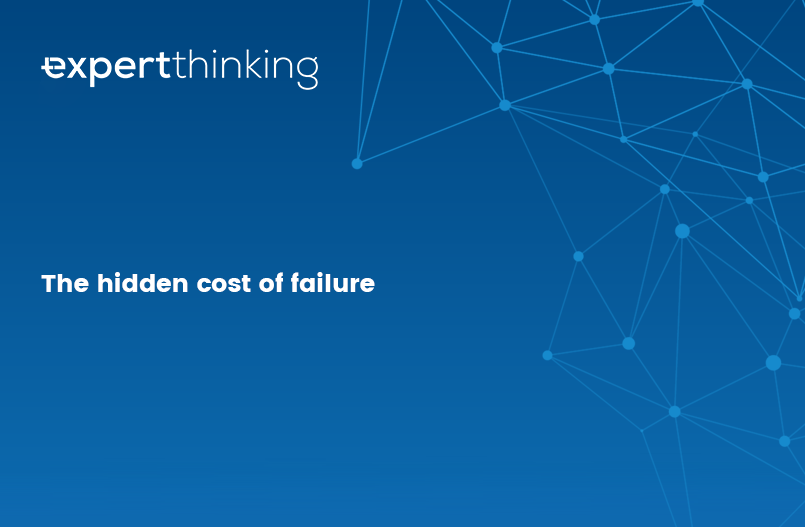It takes too long, it costs too much, it’s late, it’s over budget, and it doesn’t work as promised. Approach almost any company and you’ll hear these statements when asking about technology. But why is it the accepted ‘norm’, and what can be done to prevent it?
When you think about it, there isn’t an area of business where it is acceptable to continuously fail to meet expectations – apart from IT, that is. When it comes to technology, there is nearly always some level of dissatisfaction.
Reasons range from a lack of appropriate skills and experience within the technology team to a lack of support from the senior stakeholders to miscommunication and lack of appreciation for each other’s role between IT and the business to a general acceptance ‘that’s just the way it is’.
At the heart of the matter, the problem is two-fold. To start, very few companies are calculating how this affects their business. And, even fewer understand the real reasons for their technology woes.
Clarifying the root cause of failure and the cost to the business is critical in ensuring that you focus your efforts on fixing the correct things and, more importantly, understand the urgency of doing so.
The cost of failure
Are you aware of how much time is lost to unnecessary technology delays in your organisation? You’re not alone. Very few organisations accurately measure it, yet it can have a massive impact on your bottom line.
The cost of failure usually comprises three elements:
Loss of productivity
A huge amount of time is lost when employees are blocked from making progress on their initiatives – usually because they’re waiting for another individual or team to complete a task. On top of that there is the time spent checking on progress being made (or not!) by those who can clear the blockage. Think of all the emails, calls, escalations etc. that a typical delay generates.
Technology waste
This is especially relevant when using cloud technology. Examples include:
- Environments being held on to for longer than necessary because a blockage is delaying progress
- The provisioning of incorrectly configured environments. The loss not only includes the initial provisioning, but the identification of the ineffective environment and the issue’s cause
Loss of revenue
The negative financial effect of poorly implemented technology is real. You may have lost customers or missed orders because you were unable to satisfy demand, or a competitor may have beaten you to market, or a poor user experience may have turned potential customers off.
The root cause of failure
Identifying the root cause of failure is of equal importance to calculating the cost of delay. Too often organisations base decisions on where they perceive the failure to be, not where the failure was introduced. Not only is this a waste of time and money, it is potentially damaging; by working to fix something that isn’t broken, you risk breaking something that is already working and, in doing so, further degrading the service.
When faced with an outcome that is neither sought nor expected, it is important to be objective and take the time to identify the root cause of the problem. Never try to guess or assume. Instead, work backwards through every process point and implementation to find where things went wrong. For example, if delays are regularly experienced during testing, it could be related to poor code quality. If your code quality is poor, that in turn could be caused by a poor requirement brief, a lack of understanding of a feature, or even a poorly skilled developer.
Solve the biggest problems
The biggest problems aren’t the biggest technical challenges. They’re the ones that cost you the most money, either through loss of productivity or loss of revenue. Once you understand the cost of the delay and the root cause of failure, you have all the information you need to focus your efforts on fixing the right problems to deliver the best value and return.




